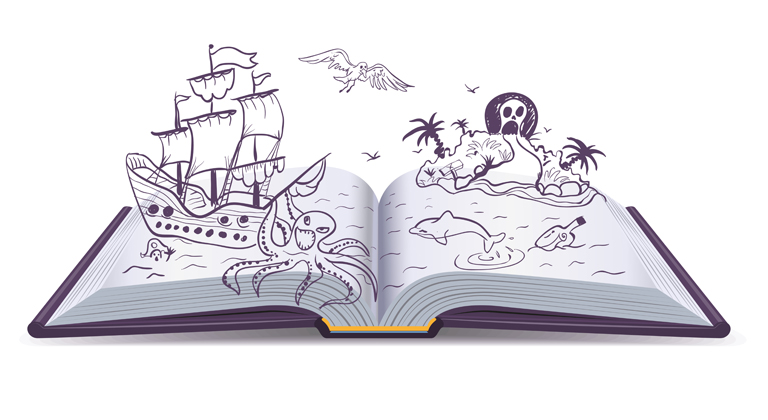What can Taika Waititi teach us about Storytelling?
There are plenty of places to look for inspiration when it comes to writing, and it’s not always from the famous authors that we grew up with. In an informal series of articles, Ginger has been delving into writing greats such as Lee Child and Ian Fleming, breaking down the lessons he thinks we can all take from their work. This week, however, Ginger is mixing it up just a bit, by looking at moviemaker Taika Waititi. After all, writing comes in all forms, as do authors, and the more well rounded the group you learn from, the stronger your own writing arsenal will be.
Thor: Love & Thunder recently hit the cinema screens, and while it hasn’t achieved the same critical success that its predecessor, Thor: Ragnarök did, the movie has nevertheless passed $600 million at the global box office and once again established director and screenwriter Taika Waititi as a master of his craft.
So, why don’t we take a minute to look at the career of this acclaimed storyteller – and figure out some of the lessons we can take away from his work.
Who is Taika Waititi?
Born in New Zealand in 1975, Taika Waititi (real name Taika David Cohen) is an Academy Award-winning filmmaker best-known for the unique way he blends comedy and drama into something unique, pointed, and memorable. While most of us know him best for his work in the Marvel Cinematic Universe, it was his World War II comedy Jojo Rabbit that really catapulted him into the spotlight; and showcased his unique ability to tackle dark, troubling topics in an engaging, relatable way.
Although most of us know him as a writer and director, Taika actually started his career as an actor and comedian, and it wasn’t until his late twenties that he experimented with screenwriting and penned his first full-length motion picture, Eagle vs Shark, which premiered at the Sundance Film Festival in 2007.
This background in acting has resulted in him making numerous appearances in his own films – most notably as Hitler in the Academy Award-winning Jojo Rabbit, but also voicing characters like rock-monster Korg in the Thor movies. I also believe moving from acting into writing is one of the reasons why the characters in his movies are so vivid and relatable; given that they’re written with the scope and opportunity of an actor in mind.
But what can Taika Waititi teach us about writing?
#1 Simplify Everything
In one recent interview, Taika explained that the success of Thor: Ragnarök came from breaking the movie down to its simplest elements – specifically Thor needing to get back home to Asgard. Having a strong, simple motivation for his characters helps really make the efforts they go to in the story believable, and helps reinforce the screenplay against the more wobbly parts of the script or dialogue.
Distilling the motivations of your characters down to their most essential elements is great writing advice – boiling all things down to what your characters need. Stories are always driven by need, not want, so defining that clearly and concisely really helps make Waititi’s characters more believable even when they’re larger-than-life Norse gods like Thor Odinson.
Figuring out what your characters need should serve as the first and most essential building blocks to your story, and focusing on the simplest and most unequivocal way of explaining that is the quickest and most effective way to get people to take your protagonist’s side and understand the actions they take as the story progresses.
#2 Create an Outline First
Are you a plotter or a pantster? Taika Waititi manages to be both at the same time – explaining that he often writes the beginning and end of his stories first, and then struggles to connect the two through what happens within the story itself.
This is actually phenomenal writing advice for a number of reasons – not least of which by forcing you to make sure there’s a definite path of connection between the beginning of your story and the end. You don’t need to have the entire thing planned out, but knowing roughly where your story is going to lead helps eliminate many of the blind corners authors write themselves into and prevents a lot of writer’s block.
Stories do need to follow a structure to be satisfying, and having the beginning and end marked out ahead of time massively streamlines the challenge of filling in what happens in the middle. You don’t need to plot everything out ahead of time; but having a starting point and a destination is really helpful.
#3 Use Humor to Explore Dark Topics
Taika Waititi is primarily known as a comic writer – yet a lot of what he writes isn’t exactly funny. His movie Boy, for example, features a thoroughly despicable character based on Taika’s own father (and played brilliantly by the director himself) and Jojo Rabbit is a ‘comedy’ set at the height of the Third Reich.
Yet having comedy serve as a vehicle to drive the plot of these movies forward has enabled Waititi to approach dark, potentially even depressing subject material in a way that remains engaging and approachable. In the way that Shakespeare often blended comedy and tragedy, the darkest humor is often the best way to shed light on difficult subject material and keep things from becoming too overwhelmingly bleak.
That being said, it’s an approach that can be taken too far. Some of the toughest criticism directed towards Thor: Love & Thunder takes aim at the non-stop, relentless comedy overtones of the movie. Even though Thor is ‘just’ an MCU superhero movie, there are some truly emotional moments in the script that are somewhat undercut by the way Taika always punctuates them with a funny punchline. Humor is a great way to make dark subjects approachable; but you don’t want comedy to dilute what’s truly meaningful.
#4 Make your Characters Human
Along the same theme as using comedy to make dark subjects approachable, one of the ways Taika Waititi succeeds in his movies is by making unapproachable or unbelievable characters human. In Thor: Ragnarok, for example, he takes the over-the-top and theatrical Norse God of Thunder and turns him into a well-intentioned airhead; which actually ends up making Thor a lot more likeable through the movie.
Similarly, his portrayal of an imaginary Hitler in Jojo Rabbit is hilarious and likeable – a word you’d never expect to be used to describe one of the most evil men in history! Yet by injecting human foibles and flaws into his characters, he paints them as real people; and therefore makes them much easier to embrace and sympathize with (even when they’re resolutely unsympathetic, like Hitler.)
Flaws, foibles, insecurities, and inadequacies are part and parcel of the human experience, and essential elements for spicing up your characters. Make sure to showcase your characters’ weaknesses as well as their strengths if you want them to truly come alive on the page.
#5 Don’t be Afraid to Embrace Escapism
When writing his second movie, Boy, Taika Waititi struggled with how dark and depressing his first few drafts were. Eventually, he concluded that there was enough dark and depressing stuff in the world and added humor and escapism to brighten the tone of the movie – even though it retained its darker and more emotional elements.
This stems from Taika’s instinctual understanding of what people want in their movies and stories – escapism.
There’s enough darkness and misery in the world already, so he’s spent his career committed to making sure to approach his storytelling with a playful, mischievous, and deliberately absurd twist on things; finding the perfect balance between humor and drama and using that contrast to make both extremes more engaging.
Don’t shy away from embracing that escapism in your own work. Even if you’re writing about dark and depressing subjects, remember that people embrace art, storytelling, and film because they want to escape from reality; and in providing that escape you’ll end up reaching and engaging with a far larger audience.
It doesn’t mean you can’t explore dark themes – I mean, once again, Jojo Rabbit is set during World War 2! But you’ll be far more likely to keep your audience with you if you’re not afraid to blend the darkness with light, fantastical, and escapist elements.
In Conclusion
In a very short space of time, Taika Waititi has risen from obscurity and become a household name – and a lot of that is due to the way he’s embraced these five elements within his storytelling.
Obviously, his approach is not for everybody – Thor: Love & Thunder definitely had its share of criticism because of how intense and non-stop the comedy and absurdity was – but there’s still value to be had in considering what worked for this now-iconic screenwriter and director, and experimenting with employing these tactics in your own writing.
But that’s just my opinion! Do you agree with my hot take on Taika Waititi? Or do you think there are things I’ve missed in my appraisal? Let me know in the comments section below!












Hi Ginger
An excellent analysis and helpful, thank you!
Another of Taika’s movies you didn’t mention is ‘Hunt for the Wilderpeople’. Perhaps it’s too New Zealand-centric and didn’t reach international markets, but it was the movie that brought him to fame in New Zealand. In it he also applies humour to potentially dark, sad themes – in this case a boy put into foster care. It’s fantastic, if you ever get a chance to watch it.